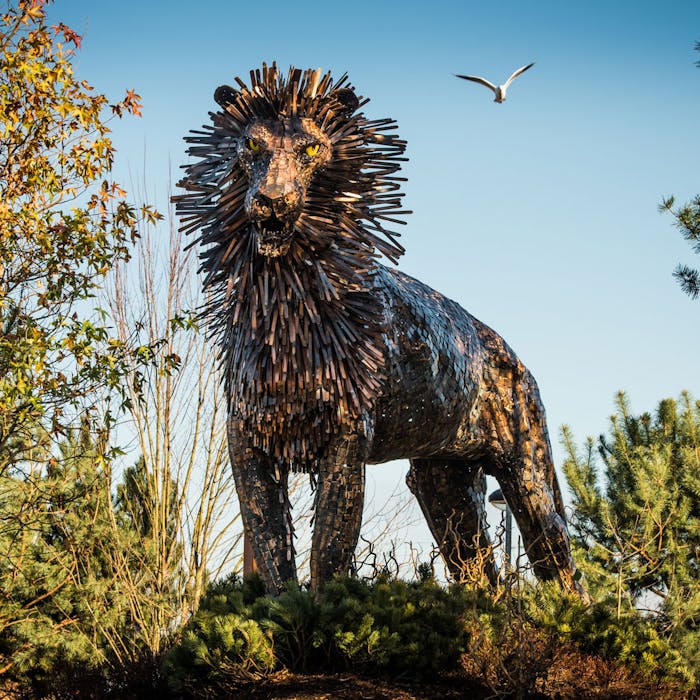
Homage to Narnia in C.S. Lewis' Belfast homeland
A glimpse of the world of Narnia imagined by Belfast-born author C.S. Lewis has been created in a new public square on the Newtownards Road in the city, with a £2.5million installation dedicated to characters from the Chronicles of Narnia books.
The statues in the square form part of an interpretive project about what inspired the author to create such a magical world. It also showcases the C.S. Lewis Trail which features the places that inspired the young C.S. Lewis, regarded as one of Belfast's most famous literary sons.
Seven iconic sculptures have been created in C.S. Lewis Square by Irish artist Maurice Harron – which include the Narnia characters Aslan the Lion, Maugrim, Mr and Mrs Beaver, the Robin, the White Witch, the Stone Table and Mr Tumnus, the faun. A few streets away is a mural to C.S. Lewis, who was born in Belfast in November 1898.
The CS Lewis Square is part of the Connswater Greenway regeneration project – an ambitious plan to totally transform some neglected parts of Belfast. There is also a Narnia Trail in Rostrevor, County Down which features many sculptures including a wardrobe and lampost, which are both iconic features of Narnia.
Clive Staples Lewis grew up in family homes on Dundela Avenue and Circular Road in the east of the city. The trail starts at 'The Searcher' sculpture outside Holywood Arches Library on the Holywood Road and includes sites such as C.S. Lewis Square (containing 7 Narnia inspired sculptures), St. Mark's Church, where his grandfather was rector and where Lewis himself was baptised, and No. 47 Dundela Avenue where a Blue Plaque marks where the writer was born.
During his school years, Lewis abandoned his childhood Christian faith and became an atheist, developing an interest in mythology and the occult. In 1916, Lewis was awarded a scholarship at University College, Oxford. Within months, however, he was conscripted to the British Army and shipped to France to fight in WWI. His experience of the horrors of war confirmed his atheism.
C.S. Lewis became a renowned novelist, poet, academic, and literary critic. He held academic positions at Oxford University, where he taught alongside fellow author J. R. R. Tolkien, and Cambridge University. Lewis is best known for his fictional works, including The Screwtape Letters, The Chronicles of Narnia, and The Space Trilogy.
Lewis returned to Anglicanism at the age of 32, owing to the influence of Tolkien and other friends, and he became an "ordinary layman of the Church of England". Lewis's faith profoundly affected his work, and his wartime radio broadcasts on the subject of Christianity brought him wide acclaim.
Moving to England, Lewis had experienced a sort of cultural shock. In his autobiography, titled Surprised by Joy, Lewis wrote: “The strange English accents with which I was surrounded seemed like the voices of demons. But what was worst was the English landscape … I have made up the quarrel since, but at that moment I conceived a hatred for England which took many years to heal.”
His love of the Irish language led to his interest in the writings of W. B. Yeats, because of Yeats’s use of Ireland’s Celtic heritage in poetry. Both writers actually met twice in 1921.
Throughout his life, Lewis visited Northern Ireland regularly, even spending his honeymoon there in 1958 at the Old Inn, Crawfordsburn. He called this “my Irish life”.
Further reading
Links to external websites are not maintained by Bite Sized Britain. They are provided to give users access to additional information. Bite Sized Britain is not responsible for the content of these external websites.
